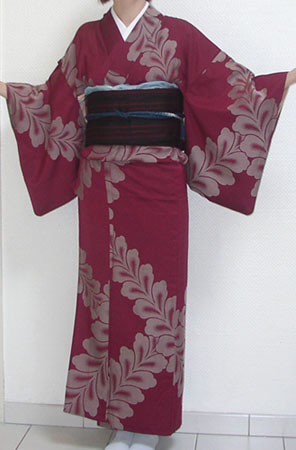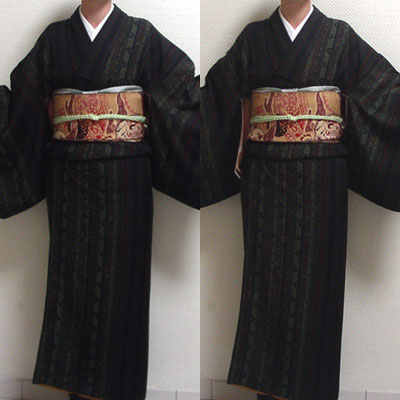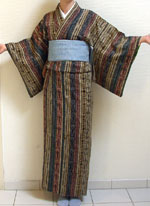A few weeks ago I came across a vintage book published by the Japan Tourist Bureau in its English-language series on Japan, titled “Kimono” by Kenichi Kawakatsu (whose first name is also transliterated Ken-ichi). There are two editions, one published in 1936 and another in 1956. While there are other publishing dates, the first is series #13 and 101 pages long, while the second (first published in 1956, apparently) is series #3 with 135 pages. No ISBN for either. You can find copies of both on Amazon’s zShops by doing a search for Kawakatsu (due to the different transliterations of his first name, to get all results just search for his family name). I’ve seen the 1956 edition sold on eBay from time to time as well.
Both editions have only a few textual differences. The book is written from the author’s point of view, as if he were talking with a French friend called Monsieur B., supposedly a famous artist from Paris in love with kimono. It covers all the basics, albeit in a quaint tone different from other books on the subject. The best part is the photos and their captions, which differ between the two. I’ve photographed those in the 1936 edition, since I didn’t want to risk putting the fragile book through the scanner:
“Kimono” (1936)
Please save any photos you like to your computer (right click on a photo and choose “save image as”) because my website does have a monthly bandwidth cap. The photos vary in quality in the books themselves, so if you see speckles, bad contrast and such, they’re in the original too, although I’ve cleaned them up a bit. These are about twice the actual size.
The most interesting photos – in my opinion at least – are the kitsuke directions! In the 1936 edition these illustrate how to tie an otaiko musubi (numbers 24-30, there are no written directions). The 1956 book, on pages 42-46, both describes and shows how to put on a houmongi and tie an otaiko musubi. The main difference in the otaiko musubi is that in 1956 its shape was more standardized, tied with less of a tilt.
Also in the 1936 edition, photos 16 and 36 have the same lady wearing a wonderful shibori haori. Photo 18 shows “best zouri for young ladies”, intriguing because I’d never seen ones like that before! The “fashions change” plate is interesting as well (it’s slightly transparent, which is why you can see the page behind it).
In short, if you come across these books and can afford them (I paid about US$20 for each on Amazon’s zShops), I recommend them for their vintage appeal.
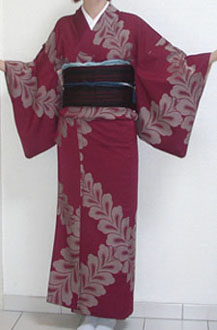

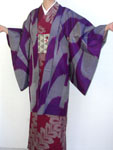 .
. 
